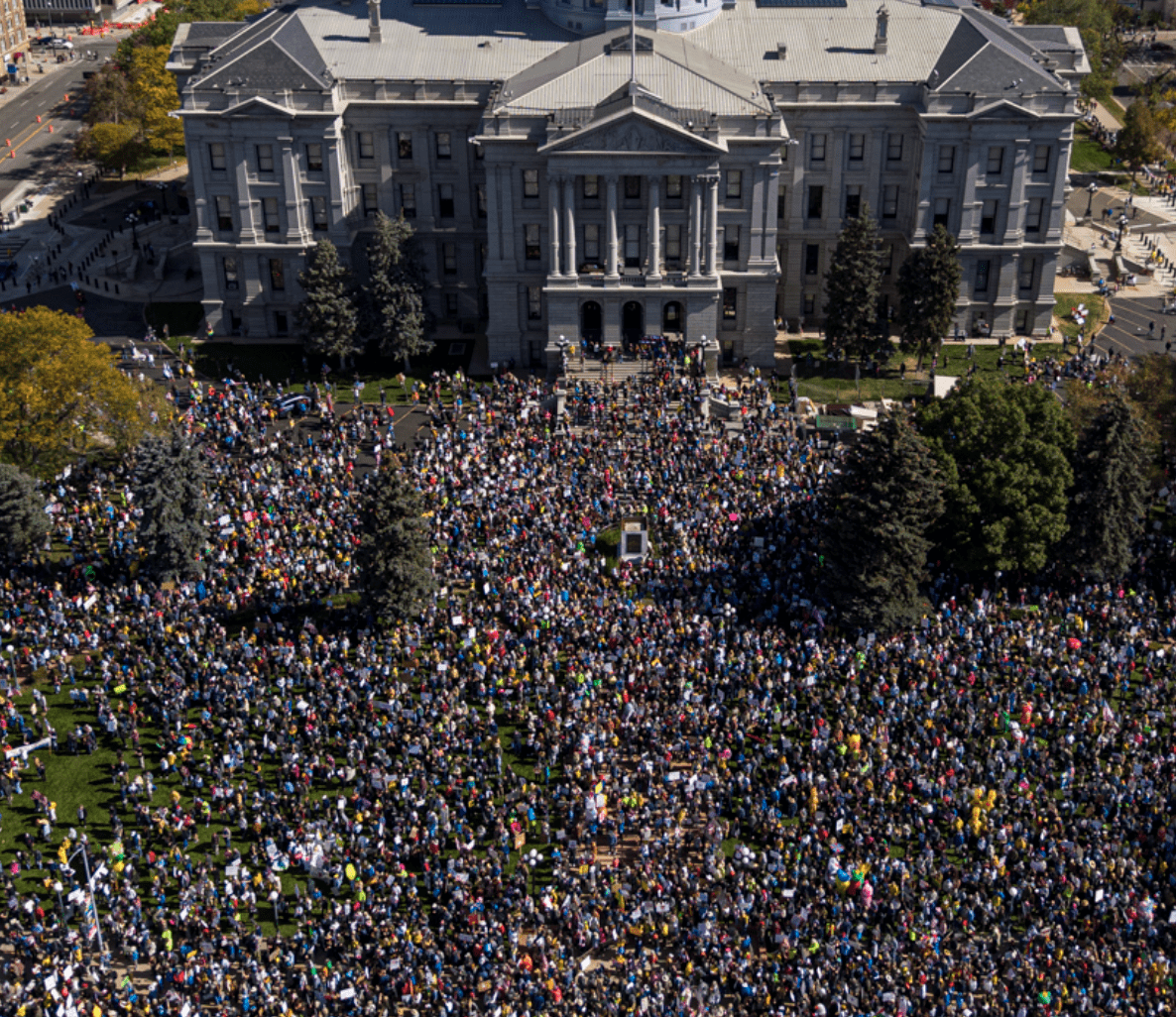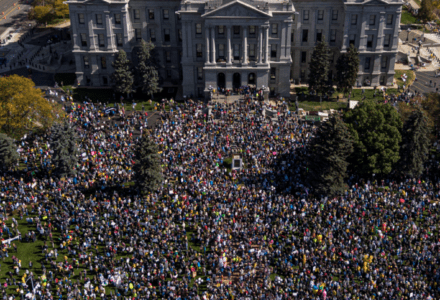No Kings Protest: On a bright June morning in 2025, lawns, downtown plazas and sidewalks from coast to coast brimmed with people holding signs, waving flags, chanting, and standing in solidarity under one simple, stark slogan: “No Kings.” What began as a symbolic protest grew into one of the largest nationwide days of mobilization in recent U.S. history. Here’s a human-touch look at what the phrase means, how it came to be, and why it’s spreading like wildfire.
Origins: Why “No Kings” Protest?
At the heart of the movement is a reaction: a refusal to accept the notion that any one person or office in the United States — a democracy built on checks and balances — should behave or be treated like a king. That flavor of symbolism has deep resonance.
- The phrase “No Kings” was chosen by the organizing coalition (notably 50501 Movement, whose name stands for “50 states, 50 protests, one movement”) to mark the first big action: June 14, 2025 — a date laden with symbolism. That day marked the U.S. Army’s 250th anniversary, fell on Flag Day, and was President Donald Trump’s 79th birthday. Organizers argued that the government-sponsored military parade in Washington, D.C. (with heavy equipment, rolling tanks and spectacle) had morphed into a pageant of strong-man style leadership rather than democratic service.
- The movement was born of a broader coalition of groups: ACLU, MoveOn, public-sector unions and democracy-advocacy groups among them. They viewed a pattern of actions they described as authoritarian: expanded executive power, deployment of federal forces in domestic contexts, curtailing of dissent, aggressive immigration enforcement, and rhetoric that leaned more toward monarchical than democratic leadership.
- The “No Kings Day of Defiance” was intentionally scheduled to coincide with and counter the Washington parade rather than simply join it. The idea: We show up everywhere else to highlight that the nation is more than a spectacle, and democracy is more than the crown of one individual. Organizers said: “The flag doesn’t belong to President Trump. It belongs to us.”
In other words: This is less about one policy, and more about one principle — that governance in America should not resemble monarchy.
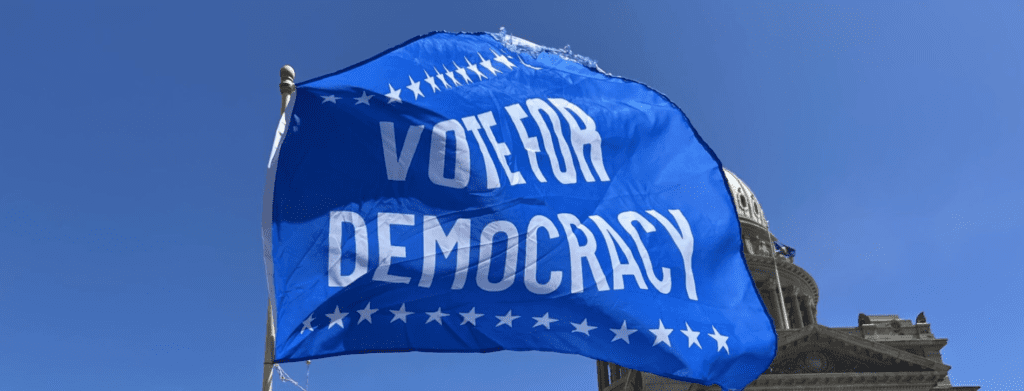
What No Kings Protest Means
When participants show up at “No Kings” rallies, they’re bringing along varied concerns — immigration, civil liberties, labor rights, climate justice — but they’re unified by a belief that the underlying issue is power, accountability, and the question: Who rules?
Here are some of the motifs you’ll see:
- No Thrones, No Crowns, No Kings. A recurring slogan, imagery of crowns, thrones, or monarch-style regalia often appear, intentionally humorous but pointed. Organizers used inflatable crowns, human-chain formations spelling “NO KINGS”, and yellow shirts to mark solidarity.
- Decentralized, Nationwide, All-States. The idea isn’t just one big rally in one city—but many in many places, under the logic that power is local and resistance must be widespread. On June 14, events were held in over 2,000 cities and towns across the U.S.
- Symbolic Resistance to Militarization & Spectacle. The organizers framed the movement as counter-spectacle. Instead of tanks and banners of one leader, the protest emphasises normal Americans, peaceful streets, shared values. They were reacting to what they saw as a shift from service to show.
- A Patriot Movement. Though critics try to cast it as anti-American, organisers emphasise it is American — that marching, dissenting, using free speech is in fact a foundational American act. A signer might carry a “Democracy Not Dynasty” sign—very 1776 vibes.
- Non-violence & Preparedness. Organizers stressed that the movement must remain peaceful, non-violent, de-escalatory. Some training was done. No weapons. The emphasis: Protesters are there to reclaim power, not to dominate.
In essence: “No Kings” means, We reject the idea that one person becomes the ultimate ruler. We insist on rule of law, constitution, accountability and that power stems from the people — not the throne.
Also Read: Philosophy of Education Philosophers
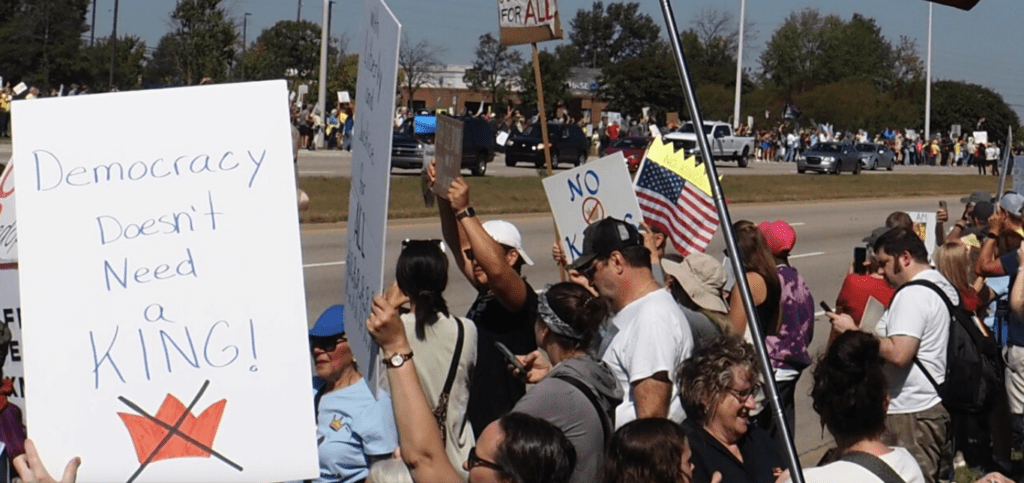
Why No Kings Protest Spreading Across U.S. Cities
There are several reasons this movement has resonated widely and spread so fast.
1. A broad invitation
Because the theme is big (“No Kings” rather than “Protest this one law”), it allows people with different concerns to join in. Whether you’re worried about immigration policy, labor rights, free speech, climate, or the budget—this movement gives you a banner under which all those fit. For example, in Denver the protest included booths about Pride Month, immigration and solidarity with L.A. protesters.
2. Local + National combo
Even small towns joined. When a movement gives local hosts permission to organise—with minimal overhead, under a bigger narrative—it scales. You’ll find “No Kings” protests in major metros (NYC, Los Angeles, Chicago) and in dozens of small towns. That helps spread awareness, build momentum, and ensure it’s not just elite cities.
3. Timing & Visuals
It’s hard to ignore a protest when the visuals are big and there’s a clear symbolic moment (June 14 — parade + birthday + flag day). Pictures circulate. The idea of “crowds everywhere except D.C.” gives it a rebel vibe. And in a media era of instant sharing, the hashtag and visuals help it spread.
4. Sense of “something more at stake”
For many people, this wasn’t just “I hate one policy.” It felt bigger: What kind of country are we? Who decides? Are checks working? That existential dimension fuels more participation.
5. Organisers prepared for scale
Groups like 50501, Indivisible and various unions had infrastructure, coordination, advice for local organisers. Having a scaffold makes it easier for local activists to plug in and go. Also Read:
No Kings Protest : What’s Happened So Far & What to Watch
- On June 14, 2025: The first major “No Kings Day of Defiance” was held. Organizers estimated more than 5 million people across 2,000+ locations.
- On October 18, 2025: The movement returned, with even broader participation — estimates of over 2,700 rallies across all 50 states.
- Media coverage is strong. For example, major outlets such as The Guardian, Time, and AP are treating it as a major national event.
- On the political front: There’s pushback. Some Republican leaders labelled the protests un-American, accused them of being extremist or tied to radical groups. For example, House Speaker Mike Johnson called upcoming events “hate-America” gatherings.
What to watch going forward:
- Will the movement maintain size and momentum, or was this a flash moment?
- Will organisers move from protest to policy proposals (i.e., turning street energy into legislative or local change)?
- Will the framing shift: how America deals with executive power, militarisation, protest rights?
- How will authorities respond (law enforcement, public policy, local governments)?
- Will there be fractures or diversification (e.g., branching into local issues, other leadership)?
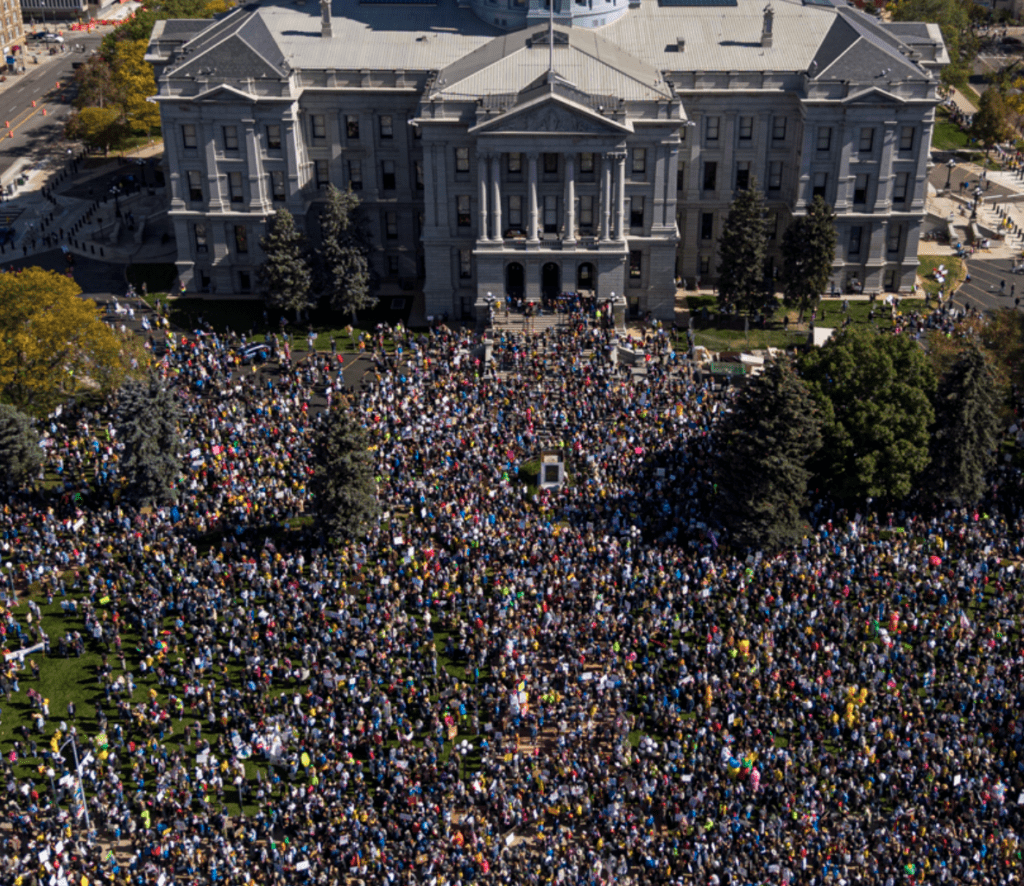
Comprehensive Media Coverage
- Reuters: “No Kings rallies expected to draw millions across U.S. protest against Trump”
An overview of the nationwide protests, highlighting the scale and key issues raised by participants.
Read more - The Washington Post: “No Kings protests against Trump draw huge crowds across the country”
Detailed coverage of major protests in cities like New York, Washington, and Chicago, including participant demographics and protest themes.
Read more - The Guardian: “No Kings protests across the US: in pictures”
A visual representation of the protests, showcasing the diversity and creativity of the demonstrators.
Read more - Al Jazeera: “Crowds gather for anti-Trump ‘No Kings’ protests across US”
An international perspective on the protests, discussing the global implications of the movement.
Read more

